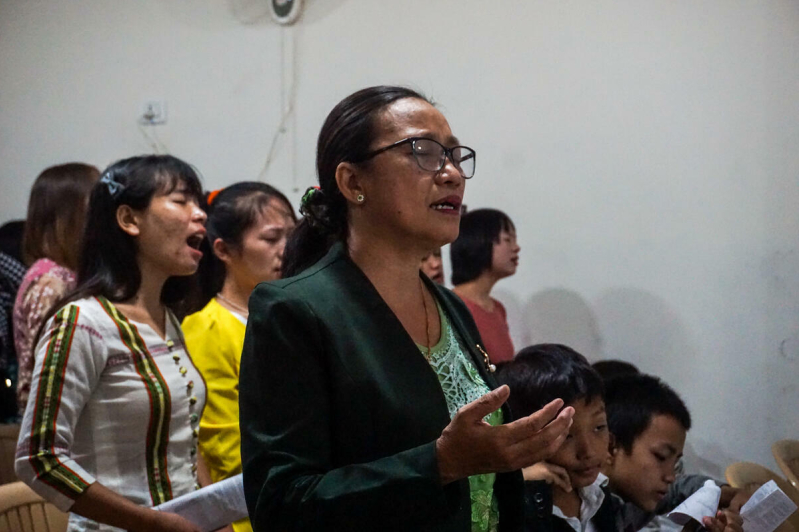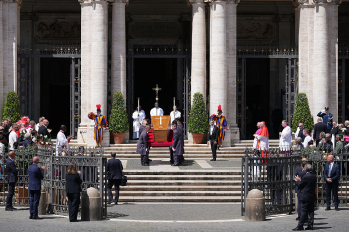
Tom Albinson has been working with refugees since 1980 and currently serves as President of the International Association for Refugees, a ministry he founded. He is also involved in the Refugee Highway Partnership, a network of churches, agencies and individuals serving forcibly displaced people. Christian Daily International was given an exclusive interview with Albinson for the occasion of World Refugee Sunday, which falls on the Sundays before and after World Refugee Day on June 20.
“A voice is heard in Ramah, weeping and great mourning, Rachel weeping for her children and refusing to be comforted, because they are no more.” (Matthew 2:18)
Surely this terrifying description of grief and oppression, from Matthew 2:18, reverberates the weeping of women and children fleeing for their lives across borders from dangerous countries, as the migrant crisis engulfs a largely indifferent world. The imbroglio has seen the 12 million refugees recorded in 2001 sky-rocket to upwards of 117 million today, according to the United Nations High Commissioner for Refugees (UNHCR).
Tom Albinson is scathing about false perceptions of refugees, pointing out that refugees crossing borders to escape war, persecution or hardship are not acting outside the law, contrary to popular belief, and the label ‘illegal migrant’ is a complete misnomer.
The refugee rights worker also calls on the Church to see its unique position and privilege, with the opportunity to bring true hope to these refugees, obeying Christ’s command to “love others.”
Albinson invites readers to close their eyes and reflect for a moment on what the word ‘refugee’ means to them.
“Now tell me what you see,” he said, believing such an experiment would likely conjure negative stereotypes. “And then we pull back and we look at the reality, which is that 50 percent of the world’s refugees are women and about 40 percent are children. If you start adding up the women and children, they make for at least 75 percent of people who are forced to flee.”
The reason being, Abinson added, that men often stay at home to fight in conflicts or for associated reasons. He cited Ukraine as a case example where men of fighting age stayed to fight Russia’s invading armed forces.
“So when we think of ‘refugee’, we should think of either a girl or boy under 18, or a woman in her late 20s to 30s. That should be the picture that we carry.
“These are the people that nations are building fences to protect themselves from. These are the people that are such a threat that there's military navies employed on the Mediterranean to protect us.”
Abinson lamented sensationalism in some media depicting refugees as dangerous looking men, feeding unwarranted fears. “That’s what you see. But the vast majority are women and children.”
Refugees also tend to flee to countries nearby rather than further afield, because neighboring nations tend to share a common language, which makes survival easier.
“The vast majority who flee their countries due to persecution or war, go next door,” added Albinson, who estimated that neighboring poor countries lacking economic clout in Sub-Saharan Africa, North Africa and the Middle East shouldered at least 85 percent of the influx in refugees.
“They are not trying to get further away. They all dream, for the first five years at least, of going back home one day. But when they realize that’s not going to happen, then their choices are very limited.”
Albinson deplored the attitude of Western nations in thinking “everybody’s trying to get here.”
“To be honest, most of the refugees don't want to. And a lot of the people who end up there are very grateful that a country welcomed them, took them in and gave them protection, but they long to go home because home is tied right to their hearts.”
Albinson also makes a point that perceptions of Ukrainian refugees being rich is misplaced. He acknowledged that the first wave of migrants from the war-ravaged country in early 2022 were those who could afford to leave, he said. “They were the ones with the resources to do it.”
However, in March 2022, Albinson visited an undisclosed village church in eastern Poland, on the border with Ukraine, “doing what it could to help.” The church reported that the first wave of refugees came in cars but “the next wave came on foot.”
“The challenges you face if you’ve got the means to do something is very different than if you don’t,” observed Albinson. Most refugees he’s encountered have fled a conflict-type situation with nothing else than “the shirt on their back.”
“Now remember, most of these people are women and children, so the vulnerability is very intense. How do you feed your kids? How do you care for yourself? How do you even just get shoes or a jacket depending on the weather, wherever you are?”
Albinson grieved at the fact that many Western countries saw these vulnerable women and children as dangerous, and cruelly left them to face exploitation by criminals.
“If the rhetoric in the countries you’re passing through is that these people are dangerous, or a threat to our comfort or security, who is left to care for these people as they’re moving?
“The trauma of being displaced is real and the multiple traumas that people experience while they're displaced is real.”
Refugees who survive often end up in refugee camps where they can get stuck for years, and suffer more trauma through criminality inside the displacement bases.
Albinson recalled receiving video footage via Whatsapp from a United Nations officer, also a Christian, working in a large 250,000-strong refugee camp in Kenya. She told how a Sudanese ethnic tribe had attacked the reception center where refugees usually ask for help upon arrival. The women and children were running for their lives. “I saw videos of these people that looked like they were fleeing another war.”
Albinson also remembers a UN meeting with António Guterrez in 2012, when he still served as UN High Commissioner for Refugees before later becoming Secretary General, in which he said faiths offer a “currency of hope.”
“I went away from that meeting and pondered that for a long time. And my mind went to the refugee churches that I knew in the Kakuma refugee camp in northern Kenya, which I'd been visiting quite often. And I thought, I've seen the people in the churches in the refugee camp pastored by refugees themselves. Everybody traumatized and far from home; multiple languages; multiple tribal affiliations and everything else going on - but I’d seen them weep in prayer and dance while they sing.”
Albinson scrutinized the interactions of these refugees at the time and identified five ingredients where churches could offer a “pot of hope soup.”
Firstly, people are “social creatures” so churches can provide safe, supportive communities. “A community that says, ‘come as you are.’ We love you even before you love us. You are welcome here. An embrace is foundational to hope.”
Secondly, the Christian worldview is a spiritual reality showing God is near, not detached. Albinson said that is a life-giving message for many refugees.
“A lot of people live in a world with a worldview that says, ‘there is no God. I'm totally on my own.’ A lot more people live in a world where they believe in some kind of god or spiritual reality, but it's detached [or uncaring]. And none of that is very life-giving. The Christian Church believes that God loved us so much that He came to us in Jesus Christ. And that in Jesus we see that injustice, suffering and evil does not get the last word, nor does death. Life and love last beyond all of the evil. And that is an incredible message to people.”
Thirdly, the Church can offer emotional wellbeing. Refugees have been “ripped out of their context” and suffered trauma. Albinson said there was a need for healing with memories, potentially via counseling to deal with “things they saw, the loved ones they lost and all of that.”
Fourthly, is practical support with language learning, understanding how to use transport in a new living setting, how to get clothes and food. Albinson warned against a “power disequilibrium” by dehumanizing people by not empowering refugees to help themselves.
Lastly, Albinson encourages churches to listen to refugees and partner with them, in line with his fourth ingredient of empowerment. “People need to be seen as people who bring something meaningful to the community and society around them.
“In the organization that I lead, we basically listen to the refugees that we serve and ask them: ‘what are the ways you want to change the world you’re living in, or the context you’re in, or how are you helping people here?”
“The approach that the Church has to offer is to be a unique community. I mean, the Church is supposed to be a healing body and then you add the practical help and recognising everybody’s got a gift - that sounds like a healthy church. And if people can be welcomed into that, a lot of hope takes root and it takes a community to keep it going.”
Albinson said that in some African refugee camps they have no worship songbooks. Even so, they write their own devotional music in the midst of the troubles they suffer. “It sounds a lot like the Psalms to me when I get it translated, but the kids lead worship as well as the adults. Everybody is a contributor.
“And I think, ‘Wow! We can learn from that.”





